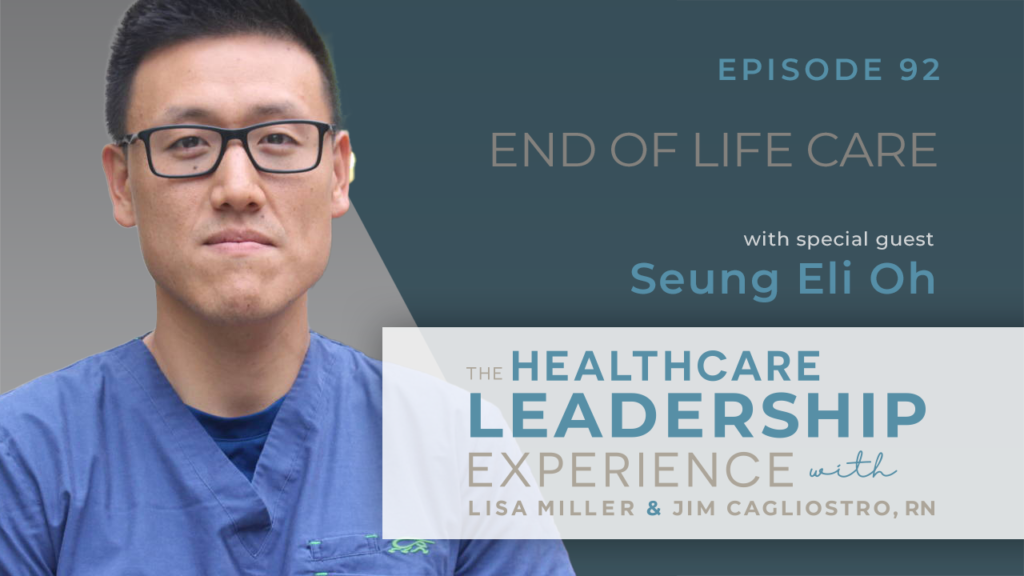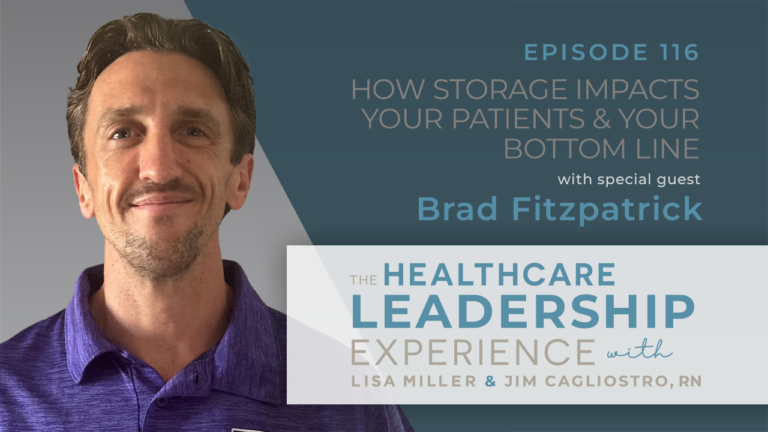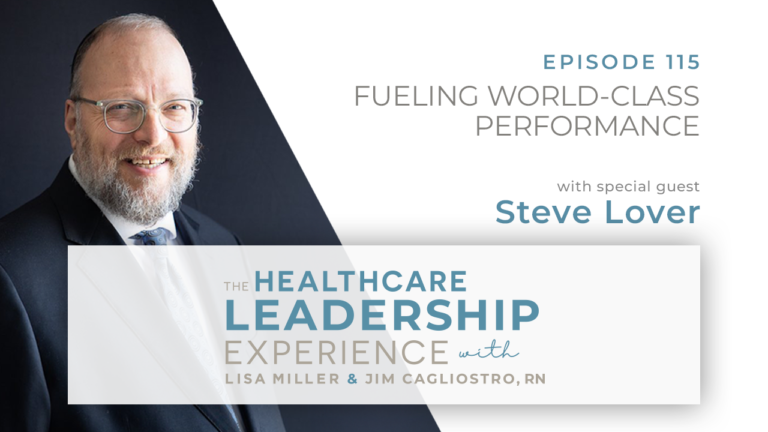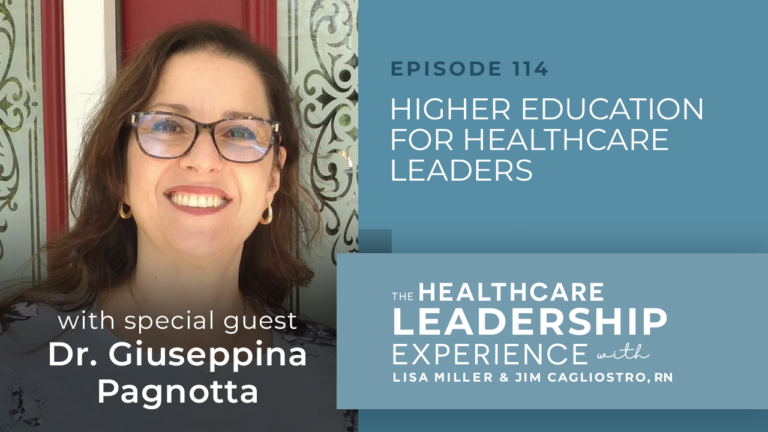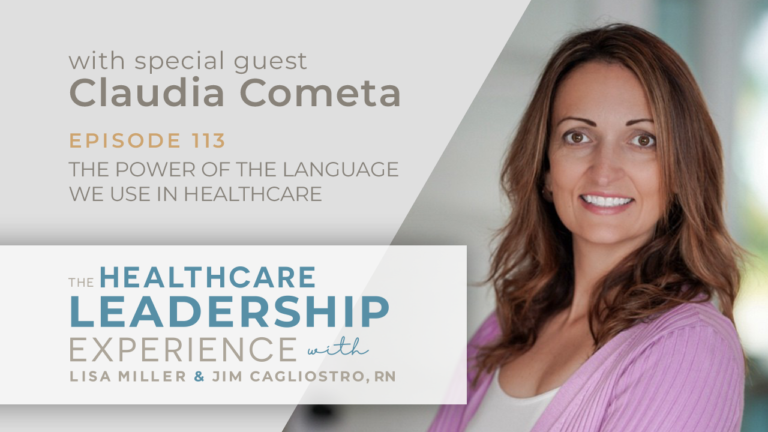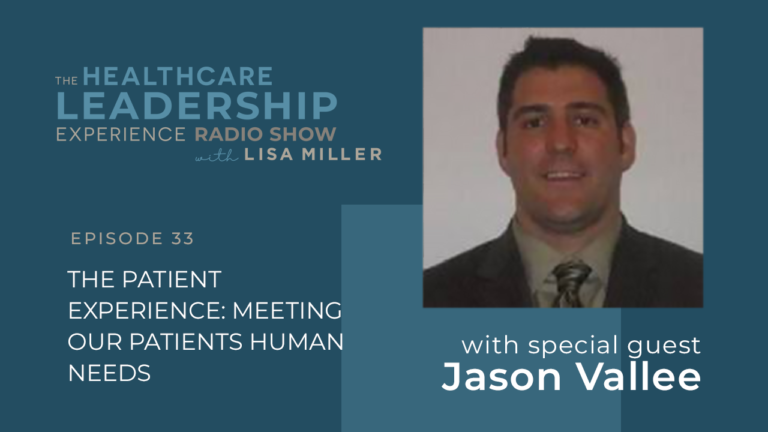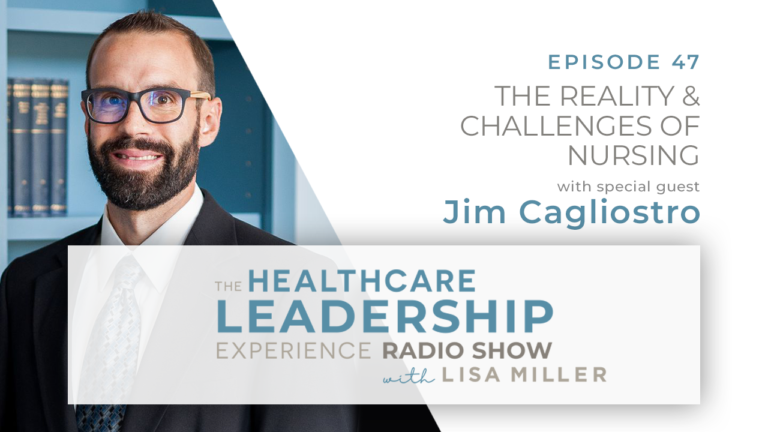Episode Introduction
Seung explores the need for more medical training on end of life care, and why quality of life should be considered in patient treatment decisions. He also encourages all families and patients to have timely conversations about their wishes, discusses the importance of dignity in death, and welcomes the return of spiritual care for terminally ill patients.
Show Topics
- The current state of end of life care in America
- A gap in understanding between doctors and patients
- Enabling meaningful conversations around quality of life
- Dignity in death and dying well
- Spiritual care and the end of life journey
- Serving as a model of leadership
4:04 The current state of end of life care in America
Seung said doctors require more training on end of life care conversations.
‘’….there are some interesting books out there that really talk about how health care in the modern age has become more and more secular. So it’s gone away from kind of the clergymen who used to have this conversation of end of life. Sure. You know, your primary doctor was probably the only doctor in your village who came and came to your home. So these conversations we’re having in your house. But now it’s all happening in the hospital. And it’s happening away from faith communities. So it’s much more secular now. And it’s all done by doctors, which there really isn’t that much training, to be honest. Most doctors that I talk to tell me pretty honestly that there really is no training in med school, if at all. You might get 1 class, you know, at most about palliative care, goals of care conversation. And I see that pretty realistically on the floor when we do have the situation when patients are dying and there are goals of care conversations about changing code status. A lot of these residents have no idea how to handle these conversations, and they kind of freeze up, and they’re not giving the patients really enough data. I’ve seen, like, the shifts towards palliative care. I think that’s really good. I think there’s more of that happening. But I don’t think it’s happening fast enough, and those conversations are still way behind. And I think the doctors are still very undertrained in terms of having goals of care conversation because it really is an art more than the science.’’
06:38 A gap in understanding between doctors and patients
Seung said doctors must have honest conversations with families around patient survival.
‘’But I think we also have a cultural issue here in America….. American medicine is reluctant to be paternalistic. They really don’t want to tell patients and their family how things should be done. They try to just give them data, and then the family gets to decide. But sometimes that doesn’t always work. We live in the age of Google, and every patient and their families think they can Google everything and find out the information. But I find that even with patients who are highly educated, that when it comes to medical decisions, it’s very difficult. And when it comes to their family, it’s even more difficult. There are many more emotions that come into play. And I think a typical example might be a family member who’s an engineer. If the doctor were to tell them you have 10% chance of survival, he sees the 10% much differently than the medical personnel who sees 10% as well. That’s basically an impossibility. But as someone who works with computers, he might actually think 10% is not so bad, so we should keep trying.’’
08:00 Enabling meaningful conversations around quality of life
Seung explained the difficulty of discussing quality of life with families and patients.
‘’… I think a lot of conversations are happening in less than probably 5 minutes, and there’s not enough time. And sometimes there’s a really good family meeting, and we do have good conversations, and there is a full discussion. But a lot of times in emergency, sometimes it’s a 5 minute conversation, and patients just want everything done. The family just wants everything done because they feel guilty. They want everything for their family. Without a full understanding of what does this mean for quality of life? What does it mean how this patient will die? And I think I’ve had one really good conversation where I try to tell the patient, you know, if you were to be intubated and go to ICU, this might mean that you never wake up. This might be a final time with your family. Versus if you were to go comfort care, you might have the last few hours with your family. You might be able to converse with them and tell them what’s on your mind. I think those things are really meaningful in life that are not always talked about during, goals and care conversations.’’
11:10 Dignity in death and dying well
Seung explained the difficulties in having timely conversations around death.
‘’…Ideally, a patient would be surrounded by their loved ones, their family members, their grandchildren, just all around the bed and just holding their hands, Sometimes singing together, I’ve seen that. And I think that’s such a meaningful way to spend your last breath and having your loved ones hold your hand. Now in the code blue situation when you’re really sick, that’s not always going happen. We try to get family in the room, but it’s often a traumatic experience. I think that’s not always the way we want to go. We really have to be realistic and say, if our chance of survival isn’t that high, how is it that I want to go? Do I envision me going in the ICU bed with a nurse putting lines at me…..how much unnecessary suffering are we causing? You know, we promise to do no harm in medicine in nursing as well. ….There’s a lot of futility, when these patients are so sick.’’
13:57 Spiritual care in the end of life journey
Seung said he has seen a rise in the need for spiritual support in terminally ill patients.
‘’I think spiritual care is a huge part of that. I think medicine and science has moved away from the spiritual aspect of things. And now we’re starting to see a little bit of that come back. Even though it’s not as religious now, there’s still a movement towards people who want a spiritual atmosphere,…. when we took the spiritual out of the goals of care conversation, end of life conversations, I think that’s made it very sterile or very secular. And now that some of the spiritual things are coming back into conversation, that makes it easier for families to talk about. …. How would they want to be remembered? How would they want to spend the last hour together with their family members? Those are really good things to think about and talk about it. ….that’s really important and helpful.’’
18:18 Serving as a model of leadership
Seung said a focus on serving others helps to enhance patient care.
‘’… the best leaders I’ve seen in health care are the ones who really model servant leadership. I’ve had many managers who their description of their job was to really serve the team, serve other nurses, so that they can better provide care for their patients. I thought it was really empowering to say, you know, I’m going to serve the team rather than just be the boss. I think that’s something I always think about as just being a leader and even outside of my job. How can I serve and do what is best for the other people? …that’s such a great example of leadership.’’
Show Links
Connect with Lisa Miller on LinkedIn
Connect with Jim Cagliostro on LinkedIn
Connect with Seung Eli Oh on LinkedIn
Check out VIE Healthcare and SpendMend
You’ll also hear:
Seung’s career history and experience as a rapid response nurse: ‘’… most of my nursing career has been critical care, rapid response. … you see a pattern of just the way we handle goals of care conversations and end of life care.’’
Healthcare providers must be capable of approaching end of life conversations more appropriately. ‘’… it’s almost like we’ve compartmentalized that to say, oh, well, that’s .. an end of life issue. We’re going to pass you on to the palliative care team…but death is something that every family has to deal with at some point.’’
The need to be honest with patients and families: ‘’I think often doctors are too reluctant to tell (families) like it is and really paint an honest picture of what the chances are. …I do a lot of CPR with my job, but CPR is only effective 10% of the time.’’
Helping families prepare for end of life conversations at an early stage. ‘’…. that’s a difficult conversation, but it’s something I really encourage family members to have.’’
What To Do Next:
- Subscribe to The Economics of Healthcare and receive a special report on 15 Effective Cost Savings Strategies.
- There are three ways to work with VIE Healthcare:
- Benchmark a vendor contract – either an existing contract or a new agreement.
- We can support your team with their cost savings initiatives to add resources and expertise. We set a bold cost savings goal and work together to achieve it.
- VIE can perform a cost savings opportunity assessment. We dig deep into all of your spend and uncover unique areas of cost savings.
- If you are interested in learning more, the quickest way to get your questions answered is to speak with Lisa Miller at lmiller@spendmend.com or directly at 732-319-5700
Episode Transcript
DOWNLOAD THE FULL PDF TRANSCRIPT HERE
CLICK HERE TO OPEN THE FULL TRANSCRIPT
Seung [00:00:00]:
Most doctors that I talk to tell me pretty honestly that there really is no training in med school, if at all. But you might get one class at most about palliative care, goals of care conversation. And I see that on the floor when we do have the situation when patients are dying and there are goals of care conversations about changing code status. A lot of these residents have no idea how to handle these conversations, and they kinda freeze up, and they’re not giving the patients really enough data. So I I’ve seen, like, the shifts towards palliative care. I think that’s really good. I I think there’s more of that happening, but I don’t think it’s happening fast enough, and those conferences are still way behind. And I think the doctors are still very undertrained in terms of having personal care conversation, because it really is an art more than a science.
Introduction (00:59):
Welcome to the Healthcare Leadership Experience Podcast, hosted by Lisa Miller and Jim Cagliostro.
Lisa is the founder of VIE Healthcare Consulting and now Managing Director at SpendMend. Lisa and her team has generated over $1 billion in financial improvements for VIE’s clients since 1999.
Since 2007, Jim has been a registered nurse working in critical care, perioperative services and outpatient settings at nationally recognized medical facilities across three states.
You’ll hear conversations on relevant and trending topics in healthcare and much more. Now, here’s your hosts, Lisa and Jim.
Jim [00:01:23]:
Hi. This is Jim Cagliostro, and you’re listening to Healthcare Leadership Experience. Today’s guest, I’m honored to have Seung Oh, critical care response nurse at Stanford Health, to discuss of the current state of end-of-life care and why it should matter to health care leaders. And actually, Seung, we didn’t really plan it this way, but as of the day of this recording, it is Halloween, and that’s a day where, you know, death is actually a focus in different cultures, different families, you know, has different meanings. But death is not necessarily the most enjoyable topic to discuss, but it is a topic we should discuss. So thank you for being on the show today to talk about this.
Seung [00:01:59]:
Yeah. Thank you for having me. Good to see you.
Jim [00:02:01]:
Absolutely. And I and I should make a note. Seung and I talked about this. Thoughts and everything shared here are from Seung, he’s not representing his employer, but we are thrilled to have him. I believe Seung is a very appropriate person to have to discuss this.
So I always like to start out these episodes, with getting to know you a little bit. So can you please just tell our listeners a little bit about yourself. How you got to where you are today in your career? Because I I think it is an interesting journey, at least, you know, whatever you’re able to share here, and why this topic of end of life care is important to you.
Seung [00:02:35]:
Yeah. So I’ve been a nurse for about 10 years now, and I actually grew up in California, and couldn’t get a job here back in the recession. I actually went to North Dakota for a couple years. Got my nursing experience. I started on a tele unit, went to ICU almost right away, and then move back to California. I worked in ICU at Stanford. And then, after a couple years, moved to rapid response team. We call it the critical care response team.
Seung [00:02:56]:
So I’ve been a rapid response nurse for about 7 years now. So most of my nursing career has been critical care, rapid response. So you just see a lot of the end of life, a lot of goals of care conversations. So you see the good side and the bad side of the health care in that aspect. Something that’s just something that I’ve always been noticing. So I’m certainly not an expert, but more as an observant of, you know, having worked in multiple hospitals in Bay Area and outside of California. You just see a pattern of just the way we handle goals of care conversations and end of life care.
Jim [00:03:28]:
That’s great. Well, thank you for sharing, Seung. And I love when, I mean, for everybody to hear people’s stories, and you definitely were set on becoming a nurse and getting that critical care experience under your belt even to the point of moving halfway across the country to get that experience and then returning to a place that you called home. So I I appreciate your commitment to that.
So I’d like you if you can, Sung, can you provide an overview of the current state of end of life care in in American health care? How are we doing? And in your opinion, has there been a significant shift at any point in the recent past, or is it just this kind of the way things have been for a while?
Seung [00:04:04]:
Yeah. I feel like, there’s some interesting books out there that really talk about how healthcare in the modern age has become more and more secular. So it’s gone away from kind of the clergymen who used to have this conversation of end of life. Sure. You know, your primary doctor was probably the only doctor in your village who came and came to your home. So these conversations we’re having in your house. But now it’s all happening in the hospital. And it’s happening away from faith communities.
Seung [00:04:31]:
So it’s much more secular now. And it’s all done by doctors, which there really isn’t that much training, to be honest. Most doctors that I talk to tell me pretty honestly that there really is no training in med school, if at all. You might get one class, you know, at most about palliative care, goals of care conversation. And I see that pretty realistically on the floor when we do have the situation when patients are dying and there are goals of care conversations about changing code status. A lot of these residents have no idea how to handle these conversations, and they kind of freeze up, and they’re not giving the patients really enough data. So I I’ve seen, like, the shifts towards palliative care. I think that’s really good.
Seung [00:05:11]:
I think there’s more of that happening. But I don’t think it’s happening fast enough, and those conferences are still way behind. And I think the doctors are still very undertrained in terms of having goals of care conversation because it really is an art more than the science.
Jim [00:05:25]:
Sure. And then as you’re sharing that song, you’re reminding me of the fact that we just live in a world of medicine that is growing more and more specialized. And so it’s almost like we’ve compartmentalized that to say, oh, well, that’s a palliative care. That’s an end of life issue. We’re gonna pass you on to the palliative care team. And, really, it’s something that we should all okay. Maybe we’re not an expert in it, but death is something that every patient is faced with. Death is something that every family has to deal with at some point.
Jim [00:05:55]:
So it can’t just be, oh, that’s someone else’s responsibility. Even if I’m not specialized in it. It’s something that we have to be able and we have to be capable of approaching in an appropriate way for our patients.
Seung [00:06:07]:
Yeah. Totally agree.
Jim [00:06:09]:
So what would you say then? Taking the next step here, what would you say are some key challenges or shortcomings that you see in our current system that prevents us from doing better. And I think you’ve touched on some of those, but is there anything that may be a key obstacle that that we have to overcome in order to do better in this area.
Seung [00:06:27]:
Yeah. I mean, I think training doctors in med school to have this conversation, I think, is a great start. I think that is probably underemphasized most med schools, and I think Sure. That’s a difficulty.
Seung [00:06:38]:
But I think we also have a cultural issue here in America, especially the American health care. I think or American medicine is reluctant to be paternalistic. They really wanted to tell patients and their family how things should be done. So they try to just give them data, and then the family gets to decide. But sometimes that doesn’t always work. Like, I know that it’s we live in the age of Google, and every patient and their families think they can Google everything and find out the information. But I find that even with patients who are highly educated, that when it comes to medical decisions, it’s very difficult.
Seung [00:07:12]:
And when it comes to their family, it’s even more difficult. So there are much more emotions that comes into play. And I think a typical example might be a family member who’s an engineer. So if the doctor were to tell them you have 10% chance of survival, he sees the 10% much differently than the medical personnel who sees 10% as well. That’s basically an impossibility.
Jim [00:07:33]:
Mhmm.
Seung [00:07:33]:
But as someone who works with computers, he might actually think 10% is not so bad, so we should keep trying. So I think that we’ve had I’ve seen those conversations happen where it happens in a in a very different understanding of what that is. So I think often doctors are too reluctant to tell them like it is and really paint, honest picture of what the chances are. I mean, something very simple as, you know, I do a lot of CPR with my job, but CPR is only effective 10% of the time.
Jim [00:07:59]:
Sure.
Seung [00:08:00]:
Right? Now in the hospital, it’s probably even less if you really think about how sick our patients are. And I think a lot of times when family members and patients opt in for full code, they don’t understand what that means, and they don’t really understand the chances are really 1%, so if not less, if it gets to the cardiac arrest and CPR, then you really don’t have quality of life on the other end. So I think a lot of conversations are happening in less than probably 5 minutes, and there’s not enough time. And sometimes there’s really good family meeting, and we do have good conversations, and there is a full discussion. But a lot of times in emergency, sometimes it’s a 5 minute conversation, and patients just want everything done. Family just wants everything done because they feel guilty. They want everything for their family. Without a full understanding of what does this mean for quality of life? What does it mean how this patient will die? And I think I I’ve had one really good conversation where I try to Tell the patient, you know, if you were to be intubated and go to ICU, this might mean that you never wake up.
Seung [00:08:57]:
This might be a final time with your family. Versus if you were to go comfort care, you might have the last few hours with your family. You might be able to converse with them and tell them what’s on your mind. I think those are things that are really meaningful in life that’s not always talked about during, goals and care conversations.
Jim [00:09:15]:
I really love that you brought up, I think, 2 or 3 times that you mentioned quality of life, and that’s such an important concept that we’ve known each other for a while. You know, my wife is also a nurse. I’ve shared that on this podcast. And it’s something when we’re not faced with death on a daily basis, We it’s overwhelming. Even some simple basic decisions that’s like, oh, I would be on you know, I would be intubated for, you know, the rest of my life. That’s a possibility. But when we’re faced with it every day, we can help guide patients. We can help guide family members into these difficult conversations.
Jim [00:09:47]:
Again, it’s not an easy conversation, But I think because we’re exposed to it, we’re working around death often and frequently because of our responsibilities. It’s something that I think we need. We have a responsibility to help patients and family members have these conversations because, again, they’re not easy, but we really need to encourage it. But we’re gonna talk a little bit more about that quality of life issue.
f you’re just tuning in, you’re listening to the health care leadership experience, and I’m your host, Jim Cagliostro. This show is sponsored by VIE Healthcare Consulting, a SpendMend company, which provides leading edge financial and operational consulting for hospitals, healthcare institutions and other providers of patient care.
Since 1999, VIE has been a recognized leader in health care costs, hospital purchased services, health care benchmarking, supply chain management, and performance improvement. You can learn more about VIE Healthcare Consulting at viehealthcare.com.
Jim [00:10:43]:
So thinking of this quality of life, Sung, the concept of ensuring dignity for someone who’s close to death or who’s facing death, that’s gained prominence over recent years. You mentioned a number of books have been written about this. I think dying well is another phrase that that others have used. Can you explain what this means and how it relates to improving end of life care? And why does this concept of dignity matter when we talk about issues of death?
Seung [00:11:10]:
Yeah. I guess I’m speaking more from personal, examples. But as a rapid response, I think, you know, when you do CPR on a 9-year-old, it feels much different than when you do a CPR on a 60 or 70 year old. With the bone structure and just the reserve and what the probabilities are like. So I think that that’s really sad for me to see people spend the end of their life the way they’re gonna go. Ideally, you see a patient would surrounded by their loved ones, their family members, their grandchildren, just all around the bed and just holding their hands, Sometimes singing together, I’ve seen that. And I think that’s such a meaningful way to spend, your last breath and having your loved ones hold your hand. Now in the code blue situation when you’re, you know, really sick, that’s not always gonna happen.
Seung [00:11:58]:
We try to get family in the room, but it’s often traumatic experience. So I think that’s not always the way we wanna go. We really have to be realistic and say, you know, if our chance of survival isn’t that high, how is it that I wanna go? Do I envision me going kinda like naked in the ICU bed with a bunch of people doing CPR, putting lines at me, and just the pain and the amount of, torture you have to go through. I think that can be difficult too. So I think about that as well. Just how much unnecessary suffering are we causing? You know, we promise to do no harm in medicine —in nursing as well. And sometimes, you know, as I’m doing CPR, putting in IVs and IOs, and we really don’t see, you know, much. There’s a lot of futility, when these patients are so sick.
Seung [00:12:46]:
I just feel sad, and I just feel like, what are we really honoring This person and the way they are going in it. If that’s the wish, you know, I think we are happy to do so if that’s the patient’s wish and the family’s wish. But I think sometimes that’s a gray area where maybe the patient didn’t know what that was gonna look like. And maybe the family didn’t quite know how traumatic the experience is going to be to do a full code and have a full-on experience with that.
Jim [00:13:10]:
Yeah. And you mentioned earlier how we’ve kinda lost where the clergy used to do it, and you kinda have this better sense of, okay. This is a person we’re working with loved ones and desires and goals and versus, again, becoming more specialized. We get very focused on the physical. And you and I have talked about this in the past where it’s just well, let’s just add days to the end of the body’s life. It’s like, well, hold on a second. There’s a person in that body, and we don’t wanna forget about, you know, caring for that person, not just the body.
So how can health care providers and institutions better support patients and families’ emotional and psychological needs during this end-of-life journey? What resources maybe if you could mention or strategies are available, to help accomplish this purpose from a health care provider’s perspective?
Seung [00:13:57]:
Yeah. I think spiritual care is a huge part of that. I think medicine and science has kinda moved away from the spiritual aspect of things. And now we’re starting to see a little bit of that come back. Even though it’s not as religious now, there’s still a movement towards people who want spiritual atmosphere, so I think even in nursing and doctors and a lot of spiritual care directors are seeing that and how important that adds to goals of care conversation. I think when we took spiritual out of the goals of care conversation, end of life conversations, I think that’s made it very sterile or very secular. And now that some of the spiritual things are coming back into conversation, I think that makes it easier for families to talk about. Yeah.
Seung [00:14:39]:
What is it that your family member would have wanted? How would they wanna be remembered? How would they wanna spend the last hour together with their family members? So I think those are really good things to think about and talk about it. And I think we are seeing a little more change towards that direction. We definitely have really good spiritual care that show up to every code blue. So they’re always there for family members to talk to. So I think that’s really important and helpful resource.
Jim [00:15:02]:
And you mentioned it earlier, and I just wanna our listeners, I thought it was a great point, that we’re having these conversations maybe too late sometimes. So, well, let’s call the, you know, the spiritual guide or whoever the clergy at the hospital or let’s call the palliative care team when maybe that conversation, if it was had earlier, it could better prepare patients and help family members help make decisions informed decision and really help them through that process. That that’s a great point, Seung.
So maybe to get a little bit more personal, we’re almost done with our time here, but if we get a little more personal with our listeners, for our audience, for myself, Seung, what steps can be taken now? Is there anything that any of us should be doing now to prepare for some of these challenges about end-of-life care?
Seung [00:15:48]:
Yeah. You know, it it’s really interesting, which you mentioned just now. I think grief happens in different time frame for most people. Okay. And some of it’s really sad when we see patients to compensate so fast. Mhmm. Because it didn’t give it time for the family and the patient to really grieve through the dying process and accepting that will, face that. Now on I’ve seen patients and family members who have dementia where they had years to process.
Seung [00:16:15]:
I think they process it much better, and they’ve had time to have this conversation. So I think this is where time doesn’t work to our favor. If things happen suddenly, unfortunately, there just isn’t time. So I think, yeah, I recommend for, you know, a lot of people, just friends and families and people I know at church, is to have those conversations early on. And I think one, friend I had at church, whose wife was dying of dementia early onset dementia. I remember having the conversation with them and saying, you know, I really if I were you, would not to feed in tubes. You end up prolonging life, but you’re not really going to improve quality of life. And it might have been increased suffering.
Seung [00:16:55]:
And years later, he came back and thanked me and said, hey. I’m glad you told me that. Because it was unnecessary suffering and I saw her go peacefully. And that was what was important to me. So I think that’s a difficult conversation, but it’s something I really encourage family members to have. Like, you know, if something were to happen, what would you like? Do you really wanna be on a green tube? Would you wanna be fed through a machine? Is that something that’s part of your wish? So I think those are really important conversations to have early on.
Jim [00:17:23]:
I love the fact that you share that example because it makes me think of I believe a lot of people, especially if we’re talking with a friend, but even if it’s a patient or someone we’re caring for, sometimes family members need permission that, hey. It’s okay because you mentioned the idea of guilt and sometimes, like, hey… I have to do everything we can because maybe I failed as a son, you know, at some point in my life, and I feel like I’m making up for this by extending my one of my parents’ lives. You know? And it’s like, sometimes family members need to, okay, step back, take a breath. It’s okay, you know, to go this direction. And some people choose this direction when we think about the quality of life. Right? So I love that you brought that point up.
Well, Seung, I like to all end every conversation with an opportunity for our guests to share any leadership lessons that you’ve learned or anything that might have, you know, carried you through to this point of your career.
Jim [00:18:14]:
Would you mind sharing anything with us to help finish up our conversation here?
Seung [00:18:18]:
Yeah. Sure. I think the best leaders I’ve seen in healthcare are the ones who really model serving leadership. I’ve had many managers who their description of their job was to really serve the team, serve other nurses, so that they can better provide care for their patients. So I thought it was really empowering to say, you know, I’m going to serve the team rather than just be the boss. I think that’s something I always think about as just being a leader in other even outside of my job. How can I serve and do what is best for the other people? And lead in that way. I think that’s such a great example of leadership.
Jim [00:18:54]:
Great. I really appreciate it, Seung. And Seung, it’s great to catch up. I’m glad we’ve had a chance to really connect. It’s been a while, but thank you for being on the show today, and thank you to our listeners for spending time with us today.
If you have any questions about VIE Healthcare Consulting, a SpendMend Company, or if you want to reach out to me or Lisa Miller, you can find us on LinkedIn. Seung is also on LinkedIn. You can contact him there. We at SpendMend love helping hospitals save money and enhance the patient experience.
Jim [00:19:21]:
And we’re hoping that today’s episode I know today’s episode gave you some insight and some ideas to consider in your own career and in your own health care organization. Seung, once again, thank you for being on the show today.
Seung [00:19:33]:
Thank you for having me.
Speaker [00:19:36]:
Thanks for listening to The Healthcare Leadership Experience Podcast. We hope you’ve enjoyed this episode. If you’re interested in learning new strategies, best practices and ideas to utilize in your career and healthcare organization, check out our website at the healthcareleadershipexperience.com.
And oh yeah, don’t forget to rate and review us and be sure to join Lisa and Jim next time on The Healthcare Leadership Experience Podcast. Thanks again for listening.
